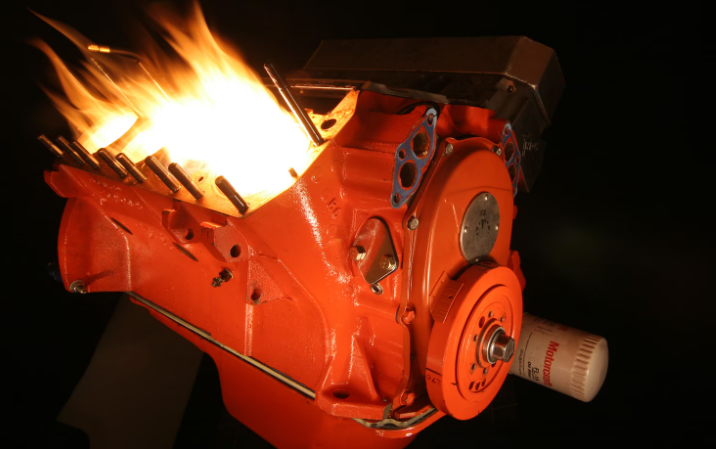In the world of automotive performance, the compression ratio of an engine plays a crucial role in determining the overall power output and efficiency. A common question among car enthusiasts and mechanics is, “HP gained by raising compression ratio from 6.8 to 9?” To fully understand the effects of altering an engine’s compression ratio, it is important to explore what compression ratio is, how it impacts horsepower (HP), and what changes occur when it’s increased.
This article will break down how raising the compression ratio from 6.8 to 9 can affect the horsepower of an engine. We’ll discuss the science behind compression ratios, the relationship between compression and horsepower, and how such modifications can enhance engine performance.
What is Compression Ratio?
Before discussing the impact of increasing the compression ratio, it’s important to define what compression ratio means in an engine.
The compression ratio is the ratio of the volume of the cylinder at the bottom of the piston’s stroke (BDC, or Bottom Dead Center) to the volume at the top of the stroke (TDC, or Top Dead Center). Simply put, it is the amount by which the air-fuel mixture is compressed within the engine cylinder during the compression stroke before ignition. The higher the compression ratio, the more the air-fuel mixture is compressed.
For example, a compression ratio of 6.8:1 means that the air-fuel mixture is compressed 6.8 times its original volume. A compression ratio of 9:1 means the air-fuel mixture is compressed 9 times. This compression directly affects the engine’s performance, including its power output and fuel efficiency.
How Does Compression Ratio Affect Horsepower?
The horsepower (HP) of an engine is a direct result of how effectively the engine burns fuel and converts it into mechanical energy. When you raise the compression ratio, the engine compresses the air-fuel mixture to a higher pressure before ignition. This leads to several effects:
- More Efficient Combustion: Higher compression ratios generally lead to more efficient combustion. With a higher ratio, the engine can extract more energy from the same volume of air-fuel mixture. This results in an increase in power output.
- Increased Thermal Efficiency: A higher compression ratio increases the temperature and pressure inside the combustion chamber, allowing for better energy extraction. This typically improves thermal efficiency, meaning less fuel is wasted.
- Higher Power Output: As a result of better combustion and thermal efficiency, engines with higher compression ratios are generally capable of producing more horsepower. Therefore, when the compression ratio is raised from 6.8 to 9, the engine can generate more horsepower, as the increased compression allows for more powerful combustion.
Understanding HP Gained by Raising Compression Ratio from 6.8 to 9
When the compression ratio is increased from 6.8 to 9, the engine’s efficiency and power output improve. Let’s break down the specifics of what happens when the compression ratio is increased:
-
Increase in Power Output:
Generally, raising the compression ratio results in an increase in horsepower. This increase depends on several factors, including the engine’s design, the fuel used, and whether the engine is naturally aspirated or turbocharged.
On average, for naturally aspirated engines, raising the compression ratio from 6.8 to 9 could result in a power gain of around 10 to 15%. In terms of numbers, if an engine originally produces 200 horsepower at a 6.8 compression ratio, increasing it to 9 could yield an additional 20 to 30 horsepower, depending on the specific engine configuration.
-
Fuel Efficiency Improvement:
A higher compression ratio allows for better thermal efficiency, which translates into improved fuel economy. Engines that operate with a higher compression ratio are better able to extract energy from the fuel, making them more efficient overall. This might not always directly correlate with an immediate HP gain, but it can improve the engine’s performance over time by making the fuel burn more completely.
-
Tuning and Engine Design:
In many cases, simply raising the compression ratio from 6.8 to 9 is not enough to guarantee a horsepower increase. The engine may require tuning adjustments to fully take advantage of the increased compression ratio. For example, you might need to adjust the timing, fuel mixture, and spark plug gaps to match the higher compression ratio for optimal performance. Engine components, such as pistons and valves, may also need to be modified to handle the increased stress caused by the higher compression ratio.
Factors to Consider When Raising Compression Ratio
While increasing the compression ratio from 6.8 to 9 can indeed improve horsepower and engine performance, there are several factors to consider before making such a modification:
-
Fuel Quality and Octane Rating
High compression ratios create more heat and pressure in the combustion chamber. To prevent knocking or pinging (pre-detonation), you may need to use higher-octane fuel. Lower-quality fuel may not withstand the higher pressures and temperatures of a high compression engine, leading to engine damage.
-
Heat Management
With a higher compression ratio, the engine will run hotter. Effective cooling systems become even more critical in such cases. The engine might require better radiators or improved oil cooling systems to avoid overheating.
-
Engine Durability
Engines with higher compression ratios experience higher internal stresses. Components such as pistons, crankshafts, and bearings are subjected to more intense forces. You may need to upgrade these components to ensure the engine remains reliable and performs optimally.
-
Timing Adjustments
The ignition timing may need to be retuned when the compression ratio is increased. Adjusting the timing ensures the spark occurs at the right moment, optimizing combustion and reducing the risk of engine knock.
-
Turbocharged and Supercharged Engines
For turbocharged or supercharged engines, the relationship between compression ratio and horsepower is more complex. Increasing the compression ratio may provide diminishing returns since the forced induction system already boosts the intake pressure.
Pros and Cons of Raising Compression Ratio
Pros:
- Increased Horsepower: As previously mentioned, a higher compression ratio can lead to more horsepower due to better combustion efficiency.
- Improved Fuel Efficiency: Higher compression can make better use of the fuel, potentially improving miles per gallon (MPG).
- Better Throttle Response: Engines with higher compression often exhibit better throttle response because they make more efficient use of the air-fuel mixture.
Cons:
- Potential for Engine Knock: Higher compression ratios increase the likelihood of knocking or pinging unless higher-octane fuel is used.
- Increased Engine Wear: The increased pressure inside the engine could accelerate wear on engine components, especially if they are not designed to handle the added stress.
- Cost of Modification: Raising the compression ratio involves significant engine modifications and tuning, which can be costly.
Conclusion
Increasing the compression ratio from 6.8 to 9 is a common modification made to improve engine performance. The key benefit of this change is an increase in horsepower due to better combustion and thermal efficiency. In general, this modification can lead to a 10 to 15% increase in horsepower, although the exact increase depends on several factors, including the engine design, tuning, and fuel quality.
However, raising the compression ratio also comes with considerations such as the need for high-octane fuel, potential heat management issues, and the possibility of increased engine wear. Before making such a modification, it’s essential to ensure that your engine components are capable of handling the increased stress and that you have the necessary supporting upgrades in place.
By understanding how HP gained by raising compression ratio from 6.8 to 9 affects engine performance, car enthusiasts and mechanics can make informed decisions about their engine modifications. Whether you’re looking to boost your engine’s power output or improve its overall efficiency, adjusting the compression ratio is a powerful tool in the quest for better performance.
FAQs
What is compression ratio in an engine?
The compression ratio is the ratio of the cylinder’s volume at the bottom of the piston stroke to the volume at the top of the stroke. It determines how much the air-fuel mixture is compressed before ignition.
What happens when you raise the compression ratio?
Raising the compression ratio increases the pressure and temperature inside the combustion chamber, leading to more efficient combustion and increased horsepower.
How much HP can be gained by raising the compression ratio from 6.8 to 9?
On average, increasing the compression ratio from 6.8 to 9 can result in a 10 to 15% increase in horsepower, depending on the engine configuration and tuning.
What is the ideal compression ratio for a performance engine?
Performance engines typically use higher compression ratios, often between 9:1 and 12:1, depending on the type of fuel used and the design of the engine.
Can I use regular fuel with a higher compression ratio?
Higher compression ratios often require higher-octane fuel to prevent knocking. Using regular fuel may cause pre-detonation and engine damage.
What components may need to be upgraded when raising the compression ratio?
Components such as pistons, valves, and the cooling system may need to be upgraded to handle the increased stress and heat generated by a higher compression ratio.
Does raising the compression ratio affect fuel economy?
Yes, a higher compression ratio can lead to improved fuel efficiency because it allows for better energy extraction from the fuel.
Is raising the compression ratio worth the cost?
It depends on your goals. If you’re looking for more horsepower and efficiency, raising the compression ratio can be beneficial, but it requires careful tuning and may involve additional costs.







